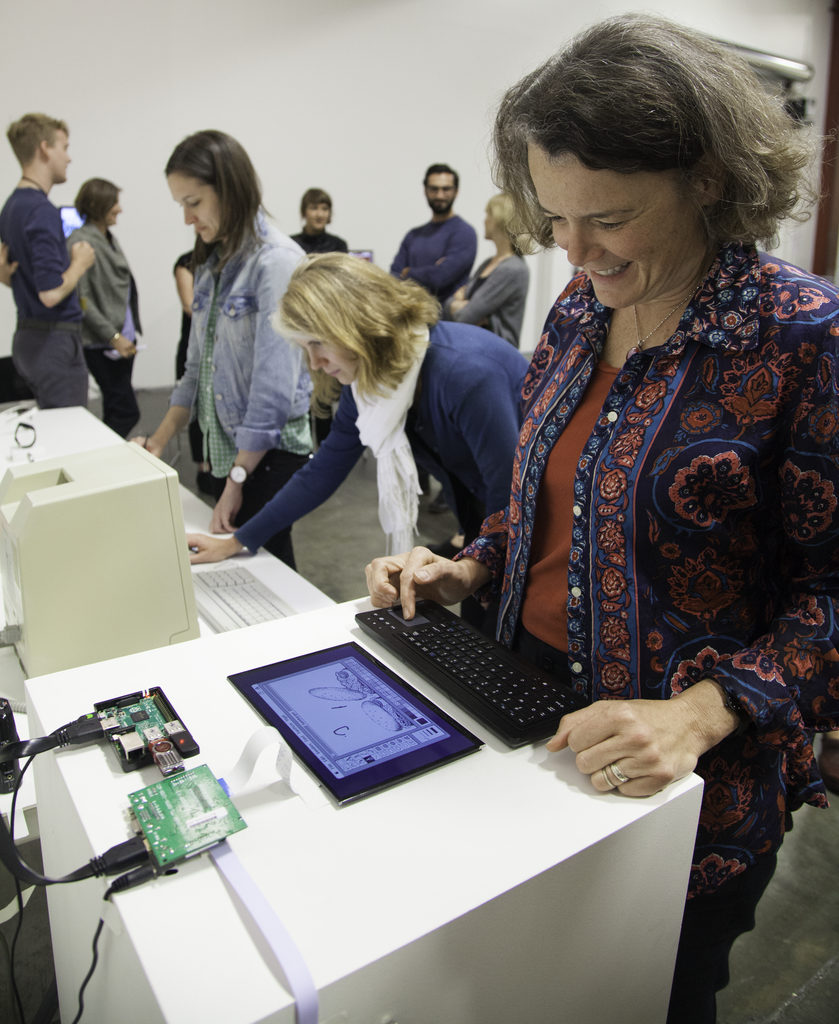
Bill Viola, He Weeps for You (detail), 1976; Partial and promised gift of Pamela and Richard Kramlich to the New Art Trust to benefit the San Francisco Museum of Modern Art, the Museum of Modern Art, New York, and Tate, United Kingdom
Unlike traditional paintings or sculptures, media artworks “live” in different modes: dormant while in storage, activated by viewers when installed in the gallery. The same work might be kept and transported on a hard drive or a thumb drive, and advances in technology — or a glitch in a few key bytes — may cause it to become unplayable or disappear.
In 1987, SFMOMA was one of the first museums in the United States to form a Media Arts curatorial department—not surprising, given the Bay Area’s special relationship to technology — and it had been acquiring such works since the 1970s. But while the artworks were bringing the galleries to life in exciting new ways, they were also raising unprecedented questions related to acquisitions, storage, loans, and ultimately conservation.
Enter Team Media, in 1996: “At first it was just a registrar, a media tech, and me” remembers Jill Sterrett, SFMOMA’s director of collections. “We were feeling a clear and urgent need to formalize ways of caring for these works that were appropriate to the intentions behind them. For instance, what sorts of questions do you ask the artist you’re acquiring a piece from? Most of these works have elaborate installation setups that require specific instructions, specialized technology, or particular viewing situations.”

Photo: Katherine Du Tiel
Enter Pam and Dick Kramlich, well-known collectors of media art who have a long history with SFMOMA. Given their special concerns with precisely these questions, they sponsored the Matters in Media Art initiative in 2003. An international research collaboration between the New Art Trust, the Museum of Modern Art in New York, SFMOMA, and Tate in London, Matters in Media Art is devoted to developing guidelines for the care and preservation of time-based media works.
“Our first meeting was a two-day intensive at Tate,” says Sterrett. “Over those two days and several months that followed, we fleshed out a set of procedures and downloadable forms that any art institution can use to loan a video, film, audio piece, or computer-based installation.”
Their efforts—in particular the boilerplate forms—were welcomed with such enthusiasm and relief by museums worldwide that the Kramlichs were inspired to bring the experts together again in 2008 for a similar workshop devoted to acquisition workflows and documents.
“Then, when artworks began to be born digital, we wondered, how do you build a digital vault with all of the same features as a vault for physical objects? When you lend a digital video, how do you ensure that it is not replicated?” Today, the Matters in Media Art team is hard at work on this third component, focusing on keeping digital video, with the results scheduled to go live in 2016.
“With technology changing constantly, this work will never be done,” Sterrett says. “Practices emerge, they are adopted, and they are revised. It’s a rapid cycle.”




